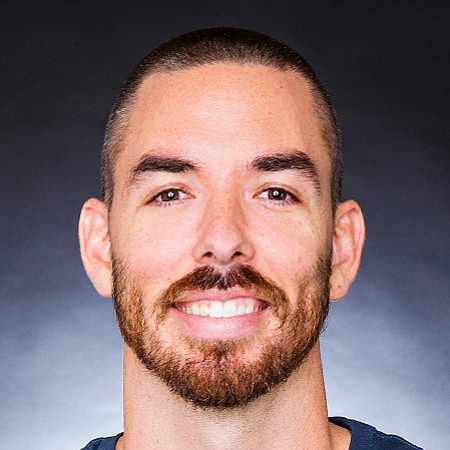Christina Hartikainen: Hi everyone, I'm Christina Hartikainen, Director of Learning Programs at ICAgile, and I'm here with Mark Merrill, the Co-Founder, Co-Chairman, and Co-CEO of Riot Games. Thanks so much, Mark, for joining us today.
Mark Merrill: Thank you for having me! It's great to be here with you guys.
Impact of the Pandemic
Christina: Riot Games has over 2,500 employees in more than 20 offices across the globe. How did the pandemic affect you at the start of things?
Mark: The pandemic had a significant impact on us, just like it has on the vast majority of businesses around the world. However, we were fortunate compared to many other companies because we develop, publish, and service online games. Both from a development standpoint and from a service standpoint, our products remained accessible to players throughout the crisis.
In early March, when the pandemic really started hitting the United States, we were able to transition about 98% of our employees to working from home within a week. Prior to that, in our Hong Kong, Shanghai, and Korea offices, we had already made that transition as the pandemic was hitting Asia.
Our priorities shifted as the situation evolved. Initially, we focused on employee safety, ensuring that we adhered to all local government guidelines and regulations. As things progressed, we turned our attention to business continuity—keeping our services running and maintaining ongoing development. From there, we focused on employee well-being and, over time, team effectiveness—figuring out where we were struggling and how we could better support our teams.
The pandemic slowed down a lot of our ongoing development, especially projects that require heavy iteration, creativity, and back-and-forth collaboration. Onboarding new employees has been difficult. However, for engineers and certain artists who need long periods of uninterrupted focus, fewer meetings and disruptions have actually been beneficial.
While it's been a mixed bag, we’re grateful we haven’t been more negatively impacted. We also looked at how we could help our local communities, provide philanthropy, and support frontline health workers during this time.
Supporting Frontline Workers
Christina: That’s fantastic. What were you able to do for frontline workers and those impacted?
Mark: We donated about four million dollars worldwide to health efforts to combat COVID-19. Additionally, we helped source hundreds of thousands of masks, including N95 masks, which were in severe shortage. By leveraging our relationship with our parent company, Tencent—the largest tech company in China—we were able to procure and distribute critical supplies to areas in the United States, particularly Los Angeles.
Staying Player-Centric During a Crisis
Christina: When you co-founded Riot Games, you set out to be the most player-centric gaming company in the world. How has that focus shaped your response to the COVID-19 pandemic?
Mark: Our mission and audience orientation have always acted as our North Star, guiding us through complex and ambiguous situations. When we’re faced with difficult decisions—whether at the leadership level or within teams—we always ask: What’s best for the player?
That perspective makes decision-making easier because it provides a clear framework for evaluating different options. It also means we take risks and make decisions that often seem counterintuitive compared to our industry peers. This commitment to our mission has been a major factor in our success and has helped attract world-class talent—people who are intrinsically motivated to do incredible things for players.
There’s a difference between having a job, having a career, and having a calling. Many people at Riot feel they have found their calling and their tribe—people like them who want to create incredible experiences for players all over the world.
The Strategic Agility Behind K/DA
Christina: Speaking of bold moves, Riot Games launched a chart-topping pop sensation—K/DA. How does the strategic agility you’ve built into your organization allow you to take these kinds of risks?
Mark: K/DA was a fascinating challenge. In case anyone isn’t familiar, K/DA stands for Kills, Deaths, and Assists—stats in League of Legends. We created a virtual pop band using in-game characters, transforming them into pop stars while maintaining their original personalities and aesthetics.
At the 2018 League of Legends World Championship in Incheon, Korea, we introduced K/DA as part of our opening ceremony. The music team at Riot composed a K-pop song—half English, half Korean—and produced a music video, which has now surpassed one billion views. The live performance at the championship was a massive success, and the song became the most downloaded track on Billboard that year.
Executing something like this requires seamless collaboration across multiple disciplines—game development, esports production, event management, music production, and merchandise. Because we have a culture of strategic agility and cross-functional collaboration, we were able to bring together diverse teams to create something truly unique for our players.
The Growth of Esports
Christina: Esports have been relatively resilient during the pandemic. How does that compare to traditional sports?
Mark: We’re fortunate that in a world where people need to stay home, gaming is something they can still do. As long as we keep our services running, players can continue to engage with our games.
Traditionally, our esports events take place in live studios with audiences and teams competing in person. When the pandemic hit, we had to figure out how to broadcast remotely—without optimal bandwidth, without studio equipment, and with players competing from their homes. Our team worked incredibly hard to ensure the show could go on.
One of the surprising outcomes was increased demand for esports content. With traditional sports shut down, networks like ESPN approached us to broadcast League of Legends matches on ESPN2. Historically, we haven’t pursued U.S. television deals, but the pandemic provided a unique opportunity to reach a broader audience.
While remote production values are lower than in-studio events, our audience appreciated that we found a way to continue. We also pivoted our Mid-Season Invitational—normally a major live event—into a 48-hour charity livestream, raising $650,000 for global charities.
Bridging the Gap Between Fans and Players
Christina: You’re also a co-owner of Los Angeles Football Club (LAFC). What lessons from esports can you bring to traditional sports?
Mark: One of the biggest opportunities is bridging the gap between fans and players. In esports, players often stream their practice sessions, interact with fans in real-time, and build personal connections. Imagine if LeBron James streamed his practice with a GoPro and chatted with fans—it would be revolutionary for traditional sports.
We’re already seeing some of this shift in traditional sports. The NHL has miked-up players during All-Star Games, allowing goalies to do play-by-play commentary from the crease. The challenge now is to integrate more of these digital fan engagement strategies into mainstream sports.
Lessons for the Future
Christina: What lessons from this crisis will you carry forward?
Mark: The biggest learning has been the viability of remote work. Many companies are shifting toward remote-first models, positioning offices as collaboration hubs rather than default workplaces. The pandemic forced a global experiment that fast-tracked five to ten years of technological adoption in a matter of months.
Another key takeaway is the importance of strategic risk planning. Every organization should ask tough questions: Are we prepared for major disruptions? Are our employees, business models, and supply chains at risk? The more we plan for uncertain futures, the better we can adapt when crises arise.
Christina: Thank you so much, Mark. This has been incredibly insightful and a lot of fun!
Mark: Thanks for having me!



